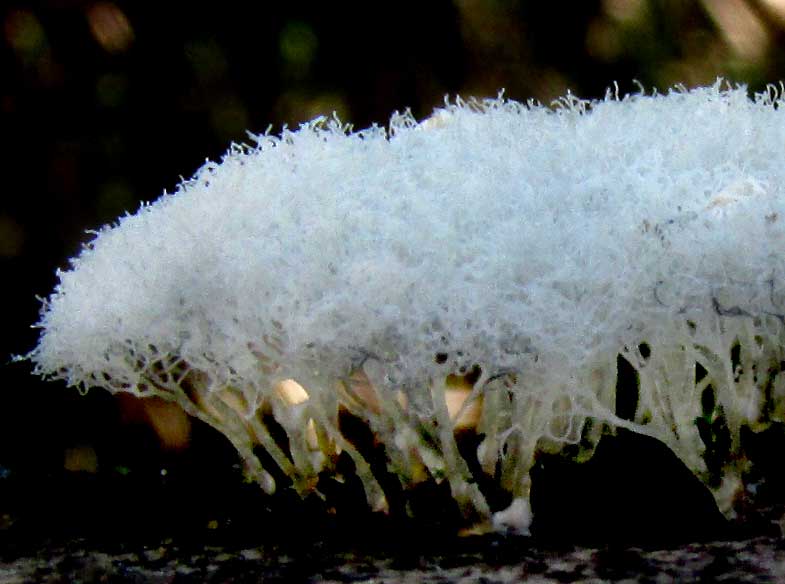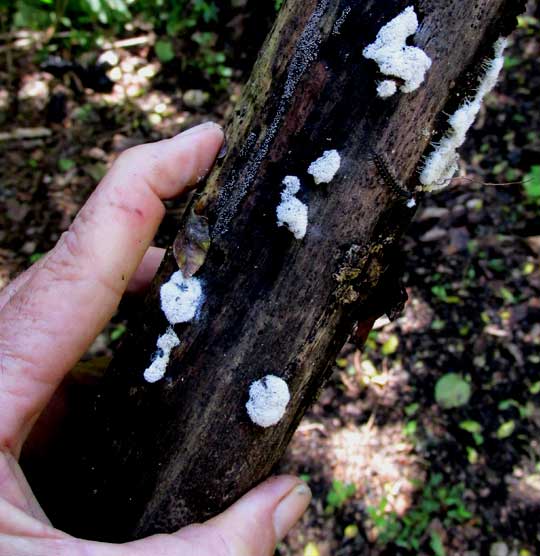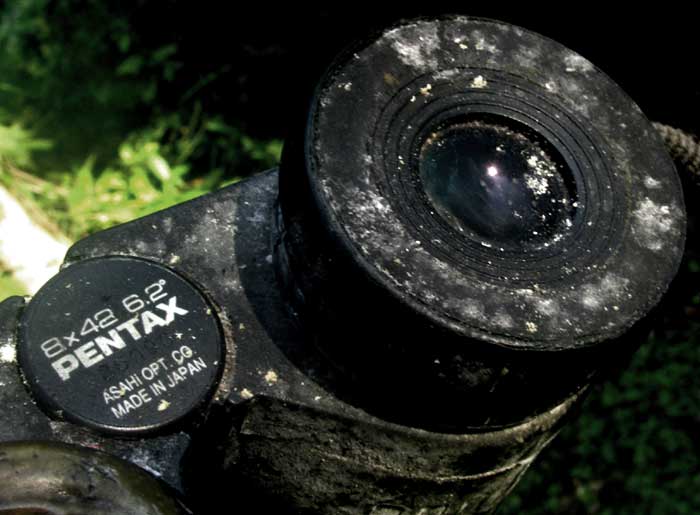Excerpts from Jim Conrad's
Naturalist Newsletter

from the December 6, 2015 Newsletter issued from Hacienda Chichen Resort beside Chichén Itzá Ruins, central Yucatán, MÉXICO
MOLD ON A LOG
This week the weather has been about perfect, not too hot, not too chilly, and only an occasional little sprinkle in the afternoons. Normally it's good to have a rain every few days but here at the end of the rainy season there's such lush greenness that we're ready for fall-type wildflowers to add their yellows and white to the roadsides, and it'd be good for things to dry out a little.
Different from most of the year, this is a good time to see fungi, most of which need high humidity. For example, below, look at the white, moldy spots on a log that's been lying in the shade next to my hut:

In that picture, in the top, right corner, along the log's lower side, notice how the white material appears to be suspended atop many slender filaments. A close-up of part of that population is shown at the top of this page.
After taking the pictures, I blew a puff of air onto the little forest, and a white cloud burst from it and drifted on a breeze into the real forest beside us. Those were reproductive structures. However, I don't what this is, whether a fungus or maybe a slime mold, so I can't say what kind of reproductive structures they were.
Just that there were lots of them, and in the soggy forest many of them must have found a home in which to settle an proliferate.
from the December 6, 2015 Newsletter issued from Hacienda Chichen Resort beside Chichén Itzá Ruins, central Yucatán, MÉXICO
MOLDY BINOCULARS
In this greenhouse-like air, decaying logs aren't the only places white mold shows up. This week I wanted to look at a bird but when I retrieved my binoculars from the hut, where they'd hung unused for about two weeks, they were in the condition shown below:

Since the slime mold shown in the previous entry grows on wood, the white stuff on my binoculars isn't that. In the above picture, notice that whatever it is, it even extends onto the glass lenses.
Fungal kinds of white mold are so common and often destructive that entire websites are dedicated just to white mold. From these I learn that the types most commonly seen in homes include: Penicillium, which often appears bluish-green and white; Aspergillus, which can also appear yellow or green, and; Cladosporium.
Mold found on glass is most likely growing on organic compounds in the lenses' coatings, not the glass itself. However, apparently when molds produce chemicals to break down organic compounds, the chemicals can etch glass, causing real damage.
You can imagine what's happening with my clothing, books... and computer.